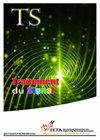Attributed Graph Convolutional Network for Enhanced Social Recommendation Through Hybrid Feedback Integration
IF 1
4区 计算机科学
Q4 COMPUTER SCIENCE, ARTIFICIAL INTELLIGENCE
引用次数: 0
Abstract
Social recommendation, a technique aimed at predicting user preferences by harnessing social ties, has frequently employed collaborative filtering (CF) due to its demonstrated efficiency and scalability. Nonetheless, a decline in performance of most extant CF techniques has been observed when confronted with extreme sparsity in explicit feedback. Past investigations predominantly merged both explicit and implicit feedback to mitigate the data scarcity issue, embedding based solely on explicit characteristics and formulating objective functions founded on user-item associations. Such a paradigm signifies a dependency on these interactions to compensate for deficient embeddings. Notably, a considerable discrepancy exists between implicit feedback and genuine user satisfaction in social recommendations, attributed to pervasive false positive interactions devoid of detailed user/item attributes. Furthermore, the establishment of connectivity between users/items has been partially dependent on users' inclinations, suggesting that the aggregation procedure might overlook certain neighbourhood preferences. In response to these challenges, a hybrid neural graph model endowed with attributive features has been introduced. This model amalgamates explicit/implicit feedback, attribute data, and a user-item interaction graph. To counteract data sparsity, a variational graph framework has been devised to extract latent representations from both feedback and attribute data. For the effective and explicit discernment of collaborative signals, the embedding incorporates a user-item interaction graph, which offers a potent modelling of elevated-order connectivities and the detection of latent user-item associations. The user and item embeddings are derived via an attentive propagation method, with the ultimate item embeddings being sourced through a linear weighted sum, eschewing non-linear activation functions. Comparative analyses on four real-world datasets have demonstrated the superior efficacy of the proposed methodology in relation to leading contemporary recommendation systems.基于混合反馈集成的属性图卷积网络增强社交推荐
本文章由计算机程序翻译,如有差异,请以英文原文为准。
求助全文
约1分钟内获得全文
求助全文
来源期刊

Traitement Du Signal
工程技术-工程:电子与电气
自引率
21.10%
发文量
162
审稿时长
>12 weeks
期刊介绍:
The TS provides rapid dissemination of original research in the field of signal processing, imaging and visioning. Since its founding in 1984, the journal has published articles that present original research results of a fundamental, methodological or applied nature. The editorial board welcomes articles on the latest and most promising results of academic research, including both theoretical results and case studies.
The TS welcomes original research papers, technical notes and review articles on various disciplines, including but not limited to:
Signal processing
Imaging
Visioning
Control
Filtering
Compression
Data transmission
Noise reduction
Deconvolution
Prediction
Identification
Classification.
 求助内容:
求助内容: 应助结果提醒方式:
应助结果提醒方式:


